realme is expanding their range of products to include notebooks and thus the introduction of the realme Book, which was launched globally last month. Their first notebook packs an Intel’s 11th Generation processor and a familiar look and feel. Like most of their devices, it aims to deliver more while still having a price point palatable for most people.
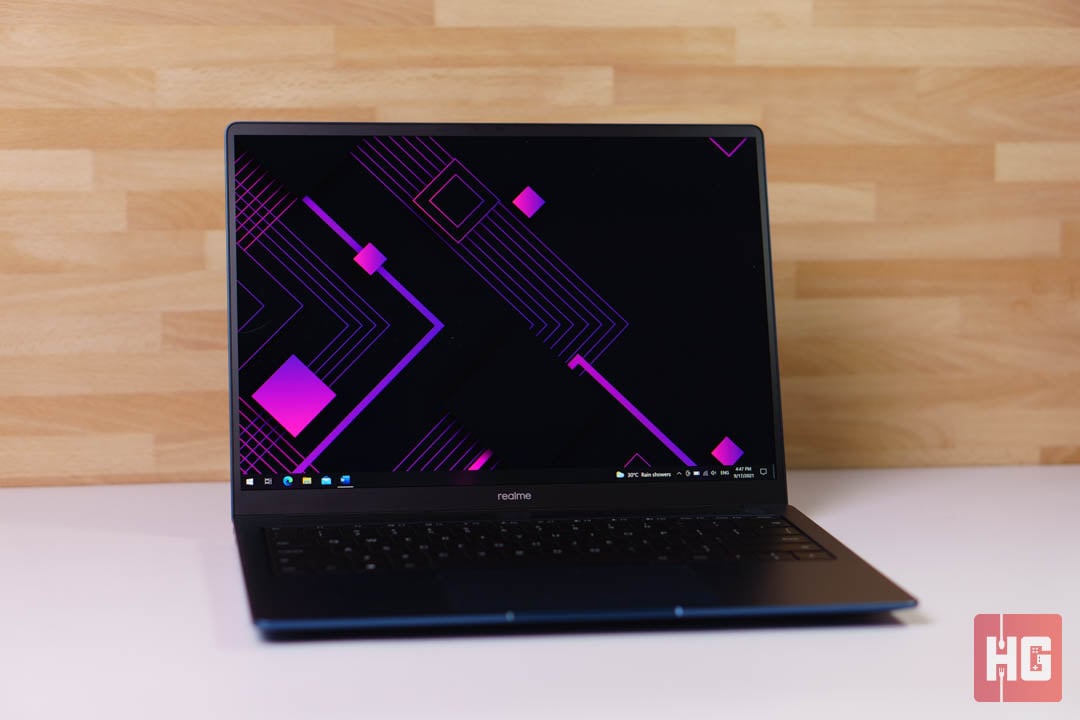
| CPU | Intel Core i3-1115G4, i5-1135G7 |
| GPU | Intel Iris Xe |
| OS | Windows 10 |
| RAM | 8GB LPDDR4x |
| Display | 14.0-inch IPS, 2160 x 1440 |
| Storage | 256GB, 512GB |
| I/O Ports (i3) | 2x USB 3.1 Gen2 Type-C, 1x USB 3.1 Gen1 Type-A |
| I/O Ports (i5) | 1x Thunderbolt 4, 1x USB 3.1 Gen2 Type-A, 1x USB 3.1 Gen1 Type-A |
| Connection | Dual-Band WiFi 802.11ac, Bluetooth 5.1 (i3); Dual-Band WiFi 802.11ax, Bluetooth 5.2 (i5) |
| Battery | 54Whr, 65W Fast Charging |
| Audio | Dual Harman Speakers |
| Others | Multi-Touch Trackpad, 3-Level Backlit Keyboard, 720p Webcam, Fingerprint Scanner |
| Dimensions | 307.21 x 228.96 x 14.9mm |
| Weight | 1.38kg |
| Colors | Real Gray, Real Blue |
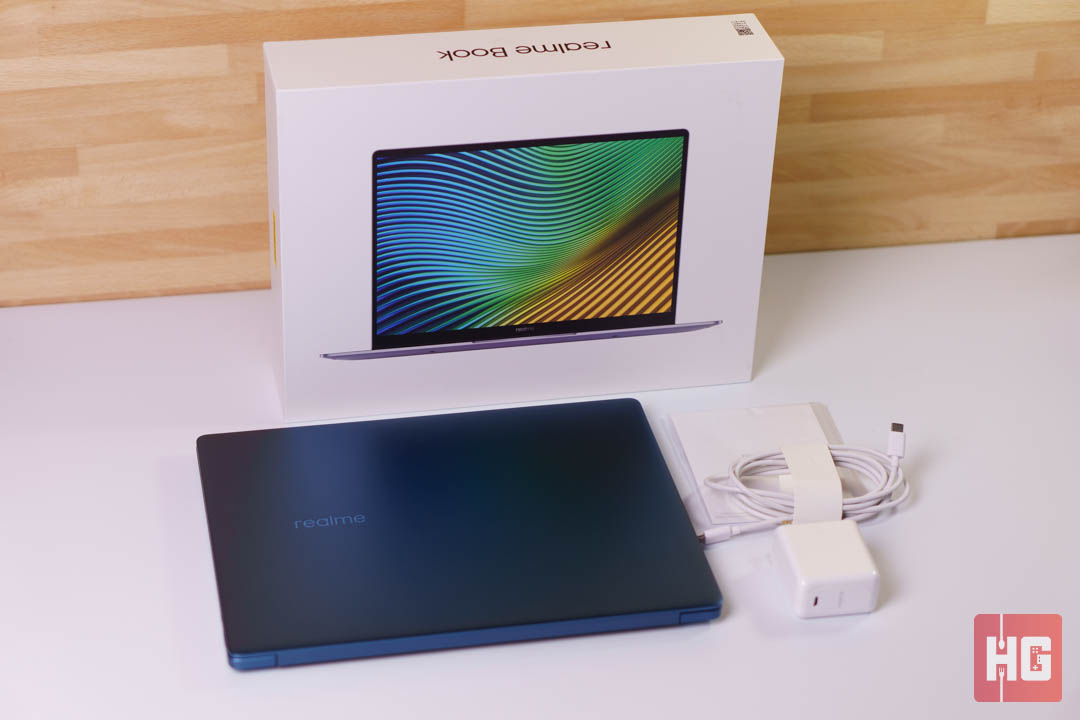
realme Book is encased in a familiar looking box. Frankly, we would have preferred if realme preserved their brand image with a bright yellow box like the rest of their products but arguing about its box is a rather moot point.
Inside the box is the notebook itself, a USB Type-C to Type-C cable, a 65W PD wall charger, and documentation. Not much in the way of extras but it’s worth noting that its charger is also compatible with smartphones that support 30W Dart Charge like the realme 8.
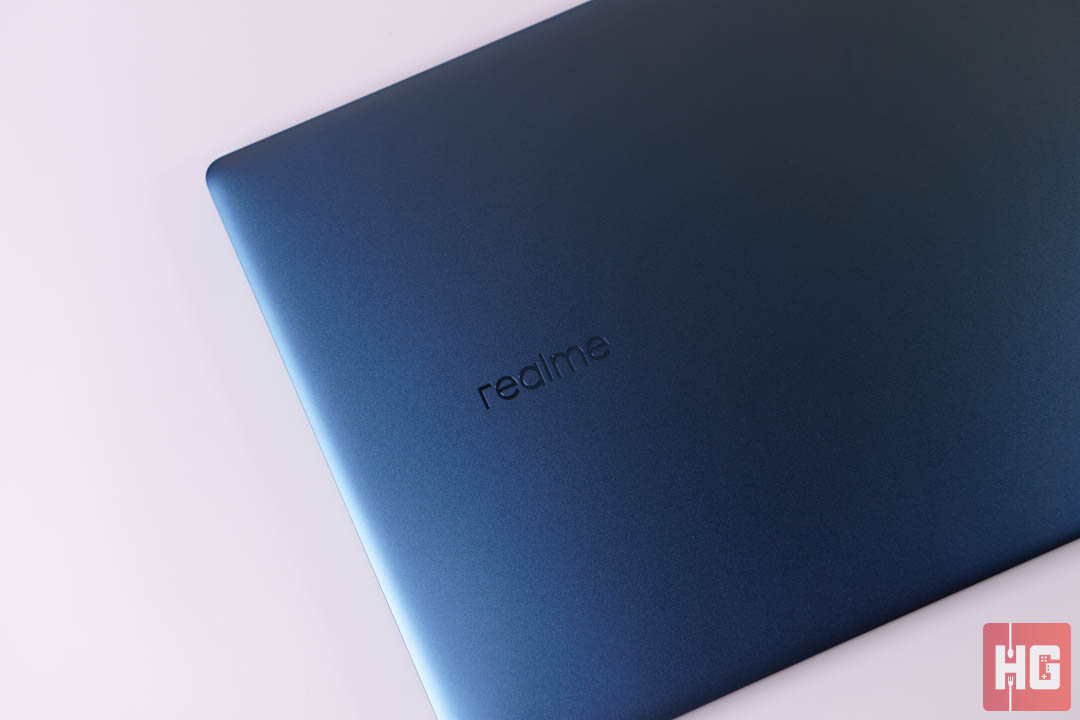
The brand’s freshman entry in the notebook market looks like a premium device. Its shell is made from hefty, anodized aluminum weighing in at around 1.38kg. All its edges are rounded and there’s minimal flex on the bottom chassis. The display arrangement does flex a bit when but nothing too alarming.

The screen can be tilted to an almost horizontal position but the hinge itself is rather stiff. It’s near impossible to open its lid one-handed which somewhat detracts from the premium look and feel that it is going for.

The realme Book comes in two color variants: Real Blue and Real Gray. Our unit is the former and its color is even throughout. It’s also worth noting that realme has removed any kind of branding stickers from the chassis giving the notebook a cleaner look compared to other Windows-based laptops.
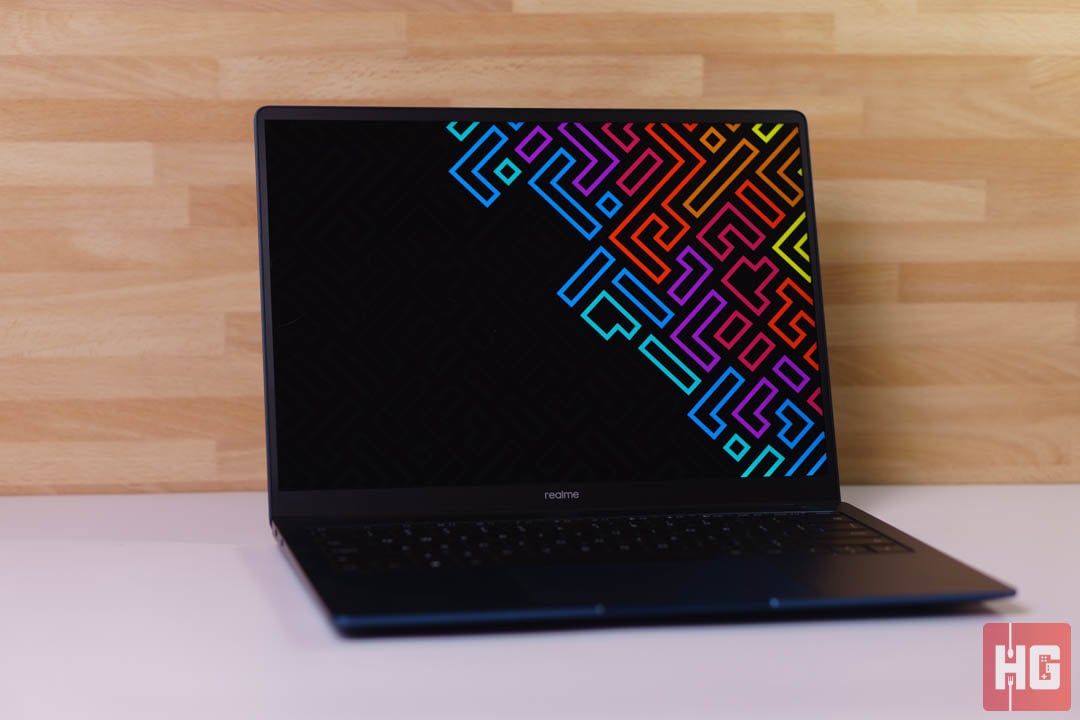
The realme Book sports a 14.0-inch IPS display with a taller 3:2 aspect ratio with a resolution of 2160 x 1440. The panel itself is glossy and there is minimal anti-glare coating, which may lead to reflections if there is a strong enough light source. Bezels are trimmed down to a minimum at the sides while the top bezel is slightly larger to fit in a 720p webcam.

Its IPS display is pretty good for a budget-oriented notebook. Viewing angles do not need to be worried about and colors are neutral by default. A quick calibration run reveals that the realme Book’s screen color coverage isn’t particularly wide but brightness is pretty decent.

Blacks are far from being deep but panel brightness uniformity is pretty good. Brightness of each portion are close to each other, but the bottom portions are slightly dimmer overall.
The notebook sports two bottom-firing speakers. It is powered by DTS so you can adjust profiles and equalizer via Windows. The speakers do sound dull, highs can get tinny, and soundstage disappears when the notebook is lifted. Fortunately, volume can get pretty loud when turned to maximum.
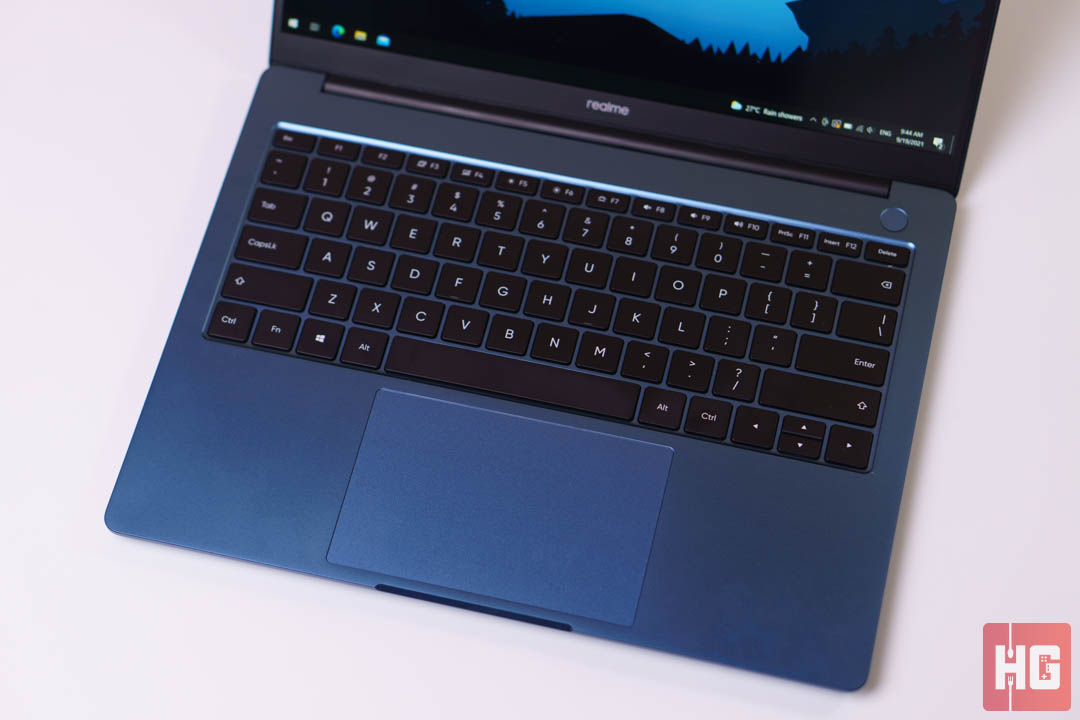
The realme Book has a standard 60% backlit keyboard layout with an arrow cluster squeezed in at the bottom-right side. The brand says that it has 1.3mm of travel distance before bottoming out and butterfly switches.
The keyboard delivers an enjoyable typing experience. Travel distance is good and there is decent tactility. The keys do show oil and sweat quite a bit and might lead to shining in the long run. It also comes with two levels of backlight activated by pressing F7.
There are some issues with the keyboard. The function keys at the top are automatically bound to their secondary functions like Brightness Up and Down, Volume Controls, and so on. It seems that there is no way to bind the F keys to their primary F1 – F12 functions. The keyboard doesn’t have a Function Lock, the BIOS doesn’t offer any keyboard settings, and Windows Mobility Center does not have any options to switch functions.
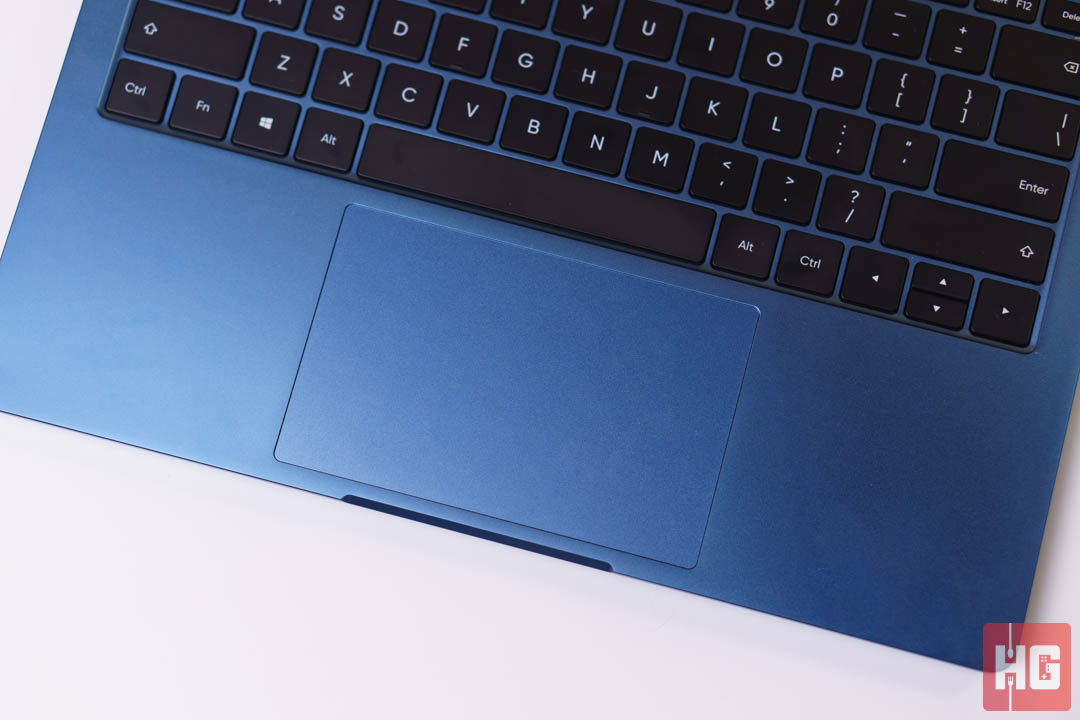
Meanwhile, the touchpad shares the same color as the chassis and is rather large spanning the spacebar and right alt key. It is not as nice as touchpad in other laptops as it lacks a glass coating and thus isn’t as smooth. Its left and right click are also a bit stiff compared to the laptops it tries to mimic.
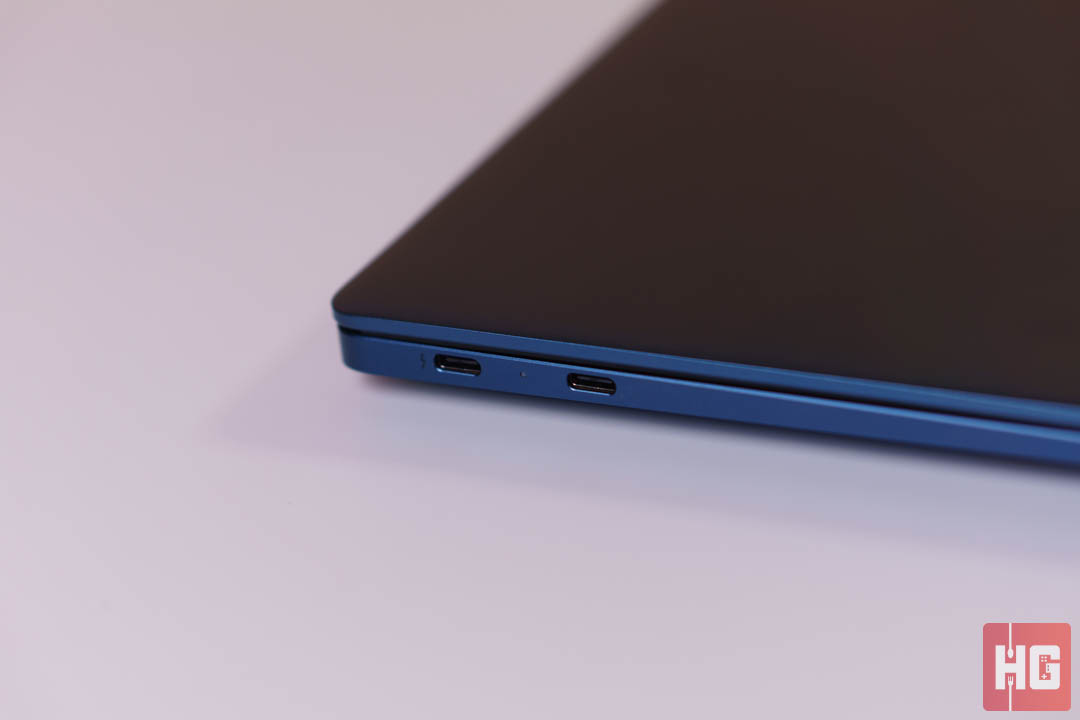
The realme Book also joins the bandwagon of minimizing its ports. At the left-hand side is a Thunderbolt 4 USB Type-C port that supports charging and displayport, and a USB 3.2 Gen2 Type-C port that also supports charging and displayport.
It’s worth noting that this is the i5-1135G7 variant since the i3-1115G4 model lacks Thunderbolt 4 support but sports a total of two USB 3.2 Gen2 Type-C ports.
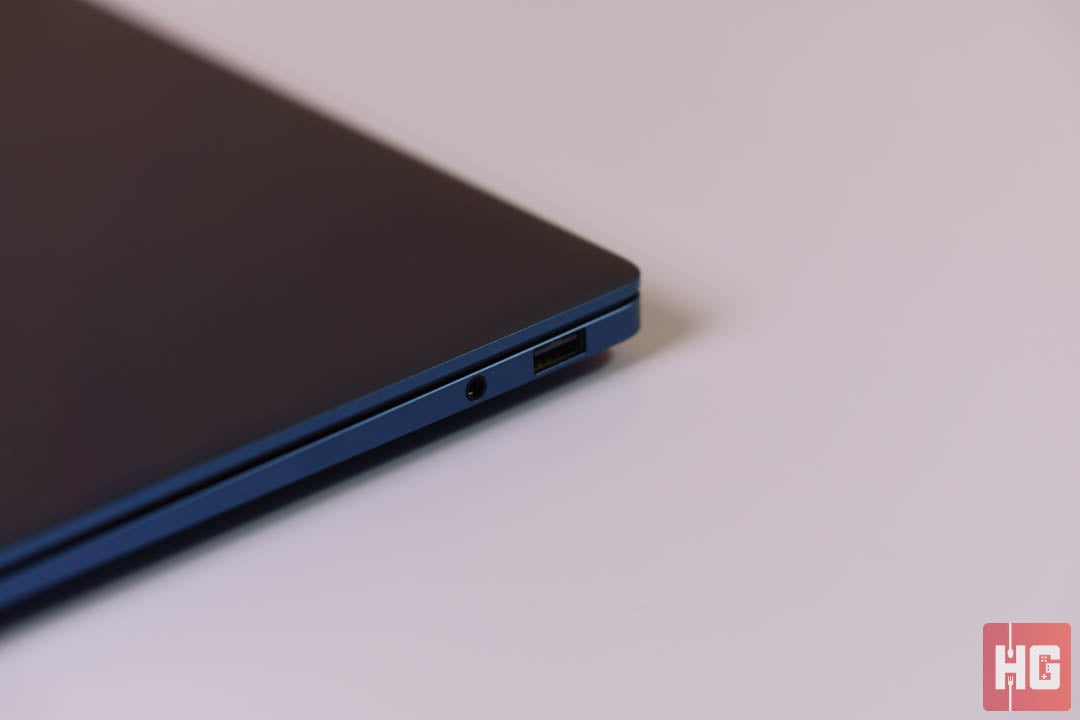
At the right-hand side is a single USB 3.1 Gen1 Type-A port and a 3.5mm audio jack. We’re happy to see a Type-A port on an ultrabook but realme could have completed port choices if they included an SD card reader.
The realme Book does not ship with any kind of bloatware included, which might be lauded by some. It sticks to the stock software included in the Windows 10 Home ecosystem like OneDrive and a free trial of Microsoft 365.
The only other software installed in the notebook are drivers and apps for hardware like DTS Audio Processing, Intel Graphics Command Center, and Elevoc Vocplus. It does include PC Connect to connect to other smartphones but it is limited for now to the realme GT series.
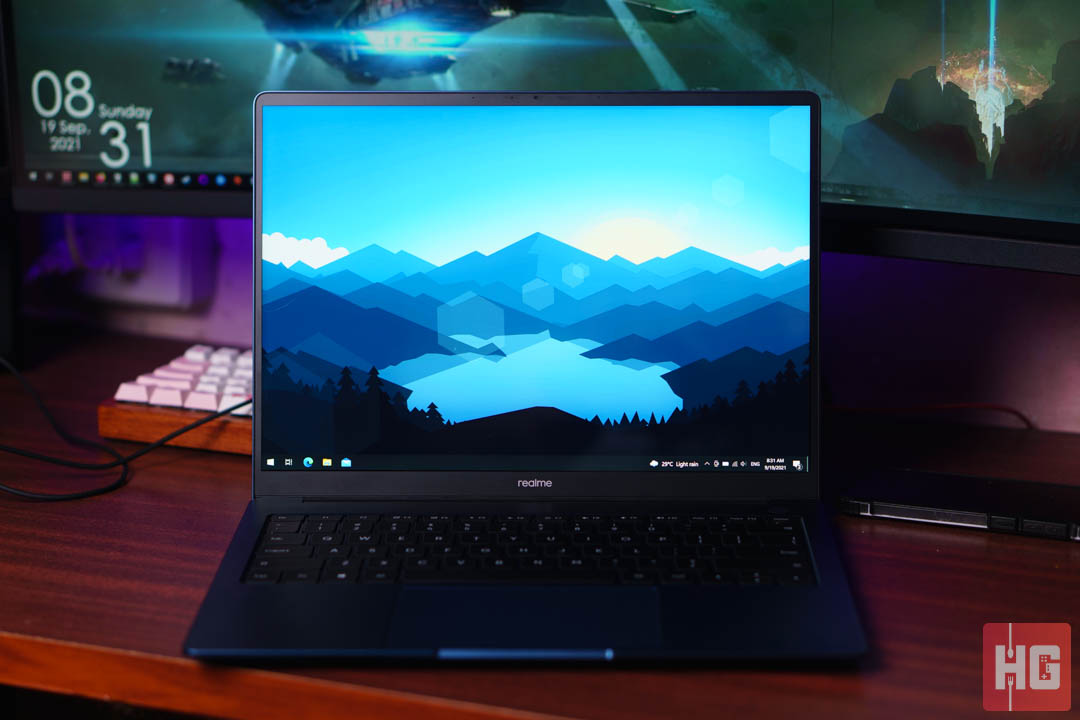
Performance of the realme Book is provided by an 11th Generation 4-core, 8-thread Intel Core i5-1135G7 with 8GB of LPDDR4x RAM running at 4267MHz and 512GB of PCIe SSD storage. Unfortunately, the notebook’s RAM is soldered and cannot be upgraded. It would have been better if the brand offered a 16GB variant since 8GB in 2021 is just the bare minimum.
Its SSD is a Samsung MZVLQ512HBLU that supports PCIe 3.0 x4. It’s advertised to run at 3100MB/s and 1800MB/s Sequential Read and Write Speeds, respectively. A test using CrystalDiskMark with a 4GiB workload reveals that the SSD is bang on the numbers with 3128MB/s Sequential Reads and have a slightly higher Sequential Writes at 1918MB/s.
With its drive benchmarks out of the way, we can move on to CPU and GPU benchmarks. Tests were run using various software that includes synthetic runs, CPU and GPU rendering, as well as light gaming.
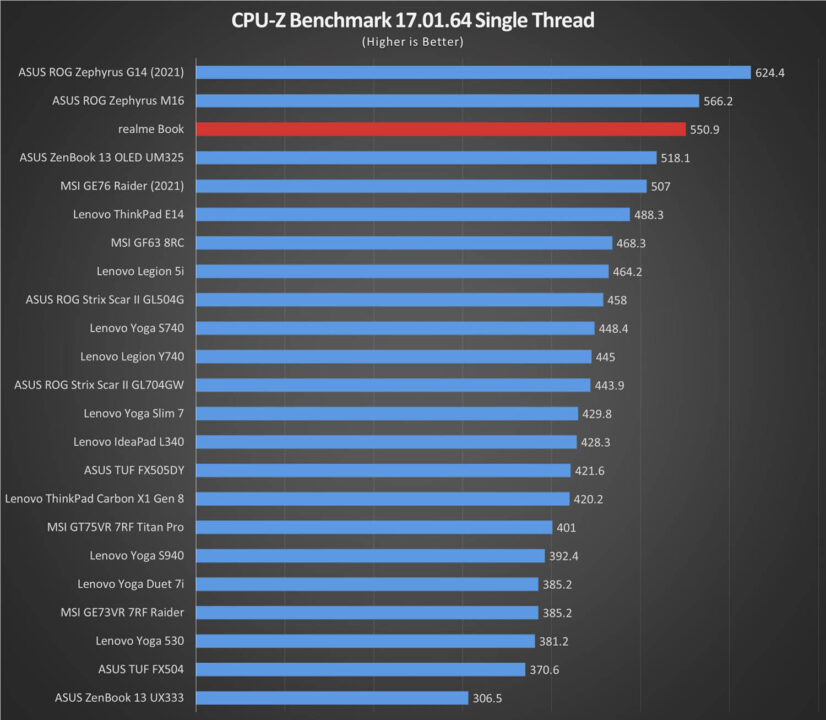
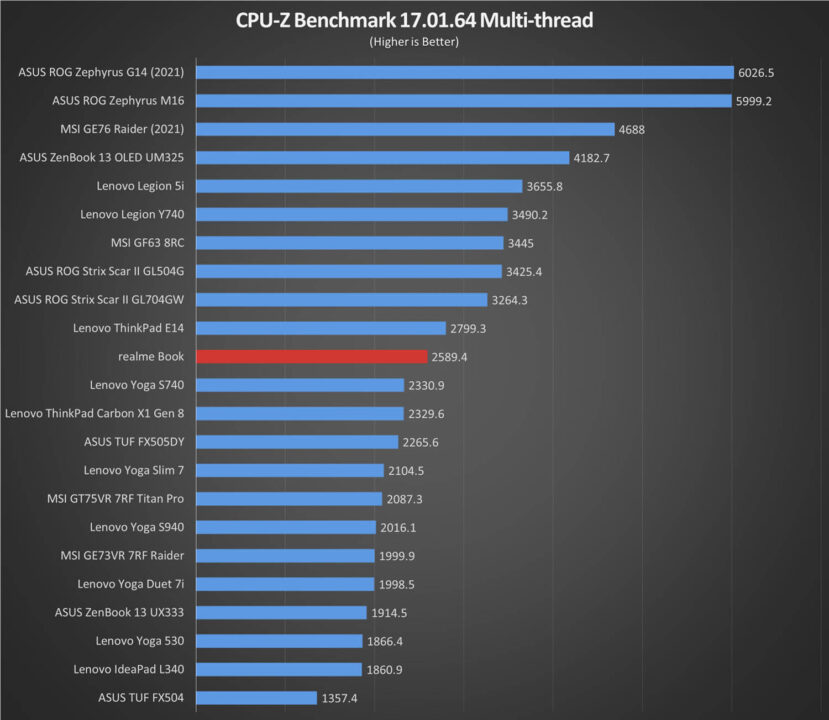
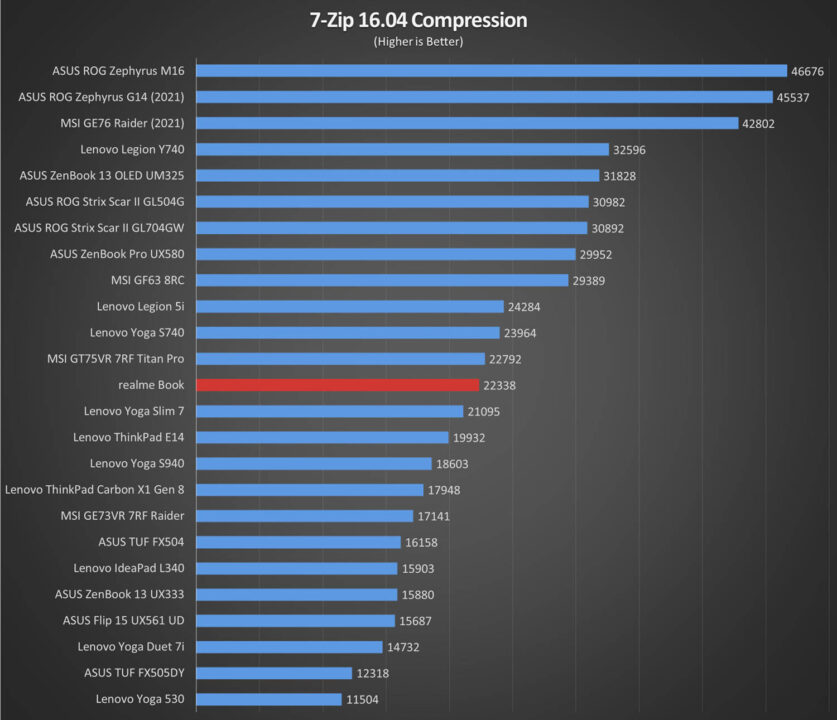
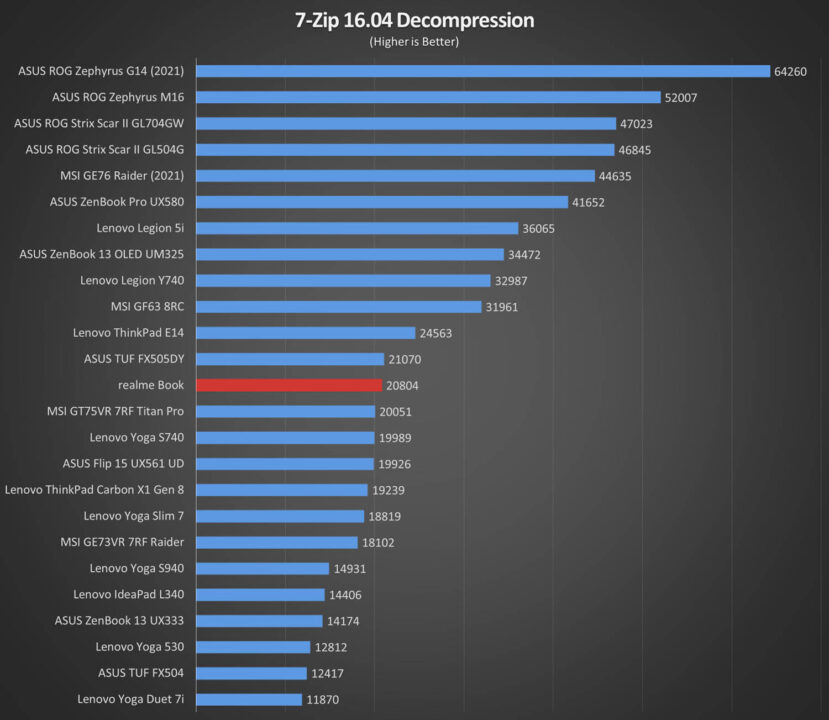
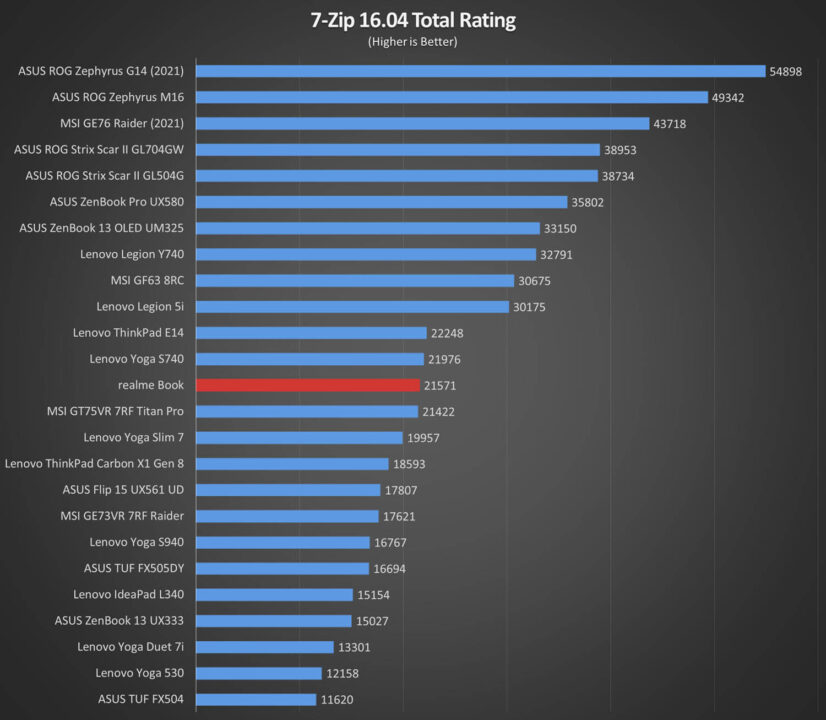
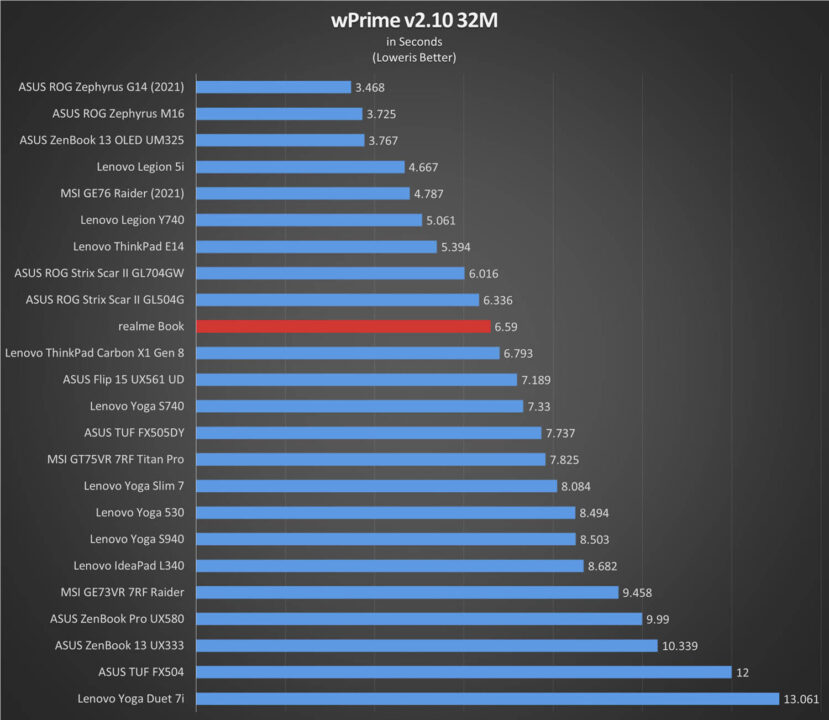
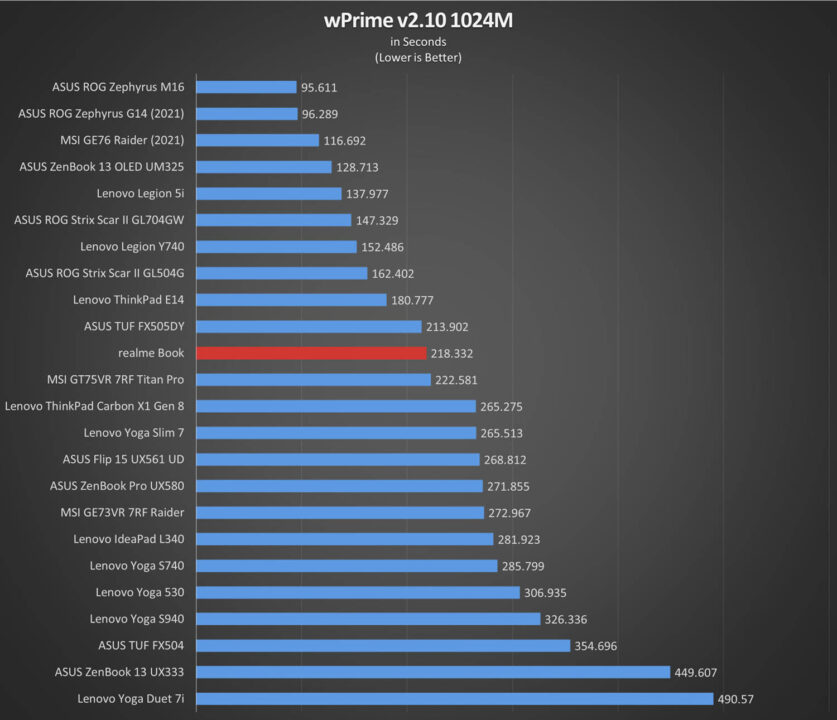
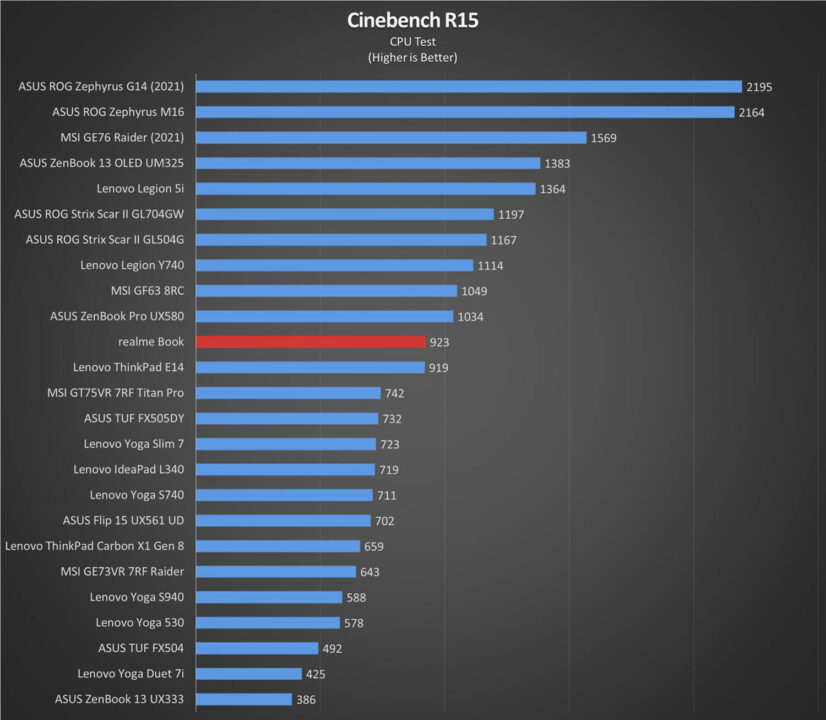

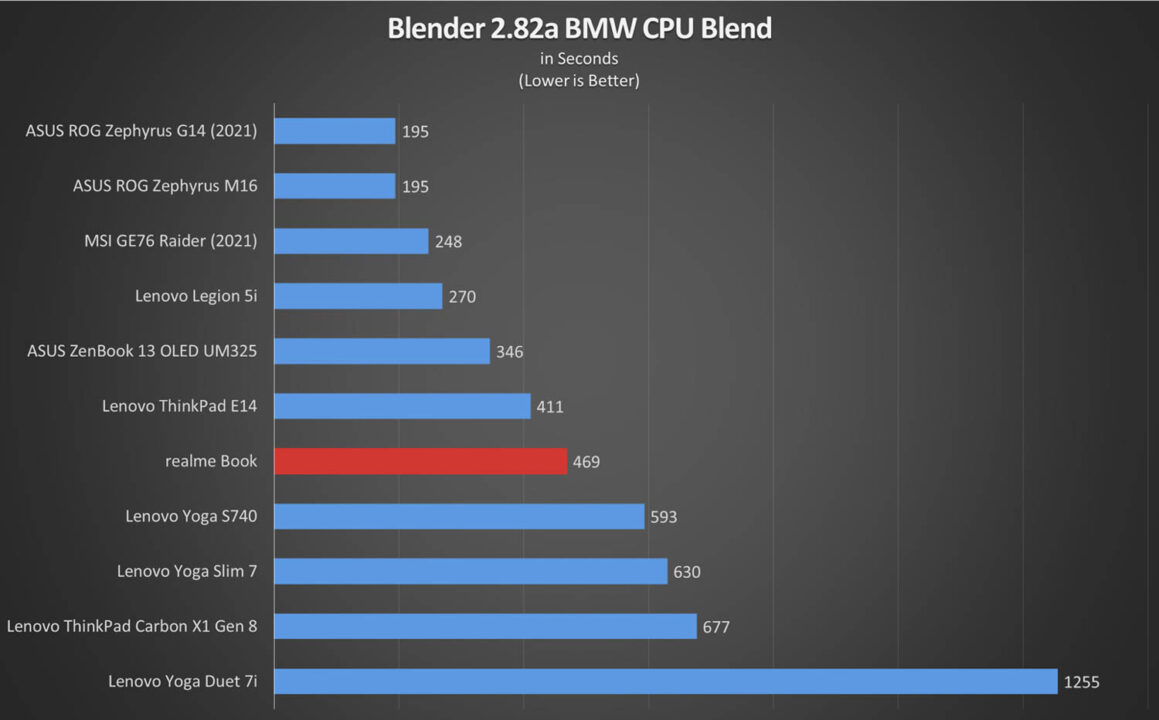
The realme Book excels in single-core workloads thanks to the improved IPC and clock speeds of its Intel 11th Generation processor. Its placement does lag to the middle of the pack when it comes to multi-threaded applications since the i5-1135G7 only comes with 4-cores and 8-threads.
Overall, performance is still good across the board given that this is an ultraportable with a 14.9mm frame. Most users that do not have any heavy applications to run like editing or graphics design don’t need to worry about any kind of slowdown.
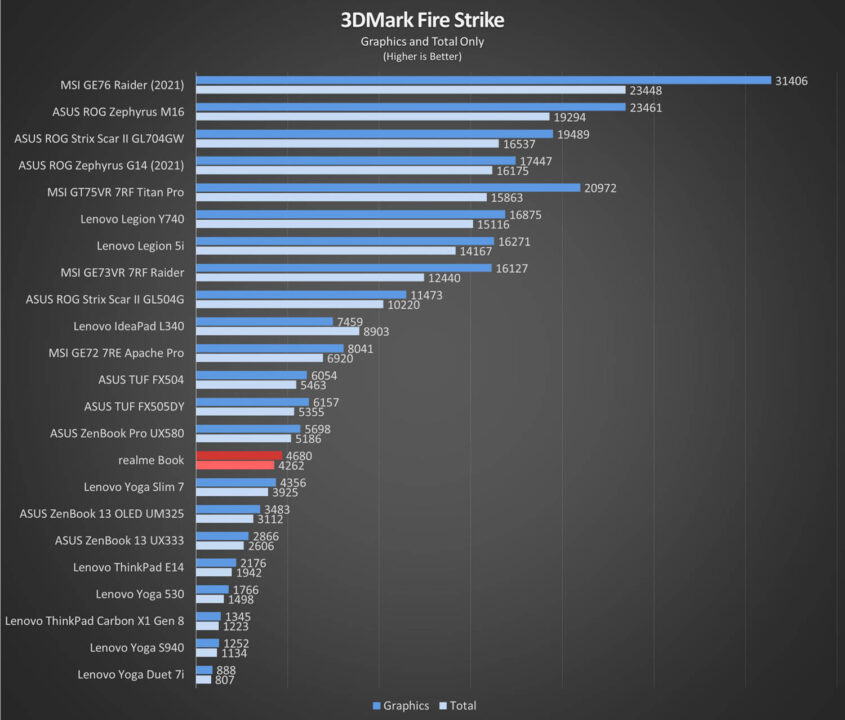
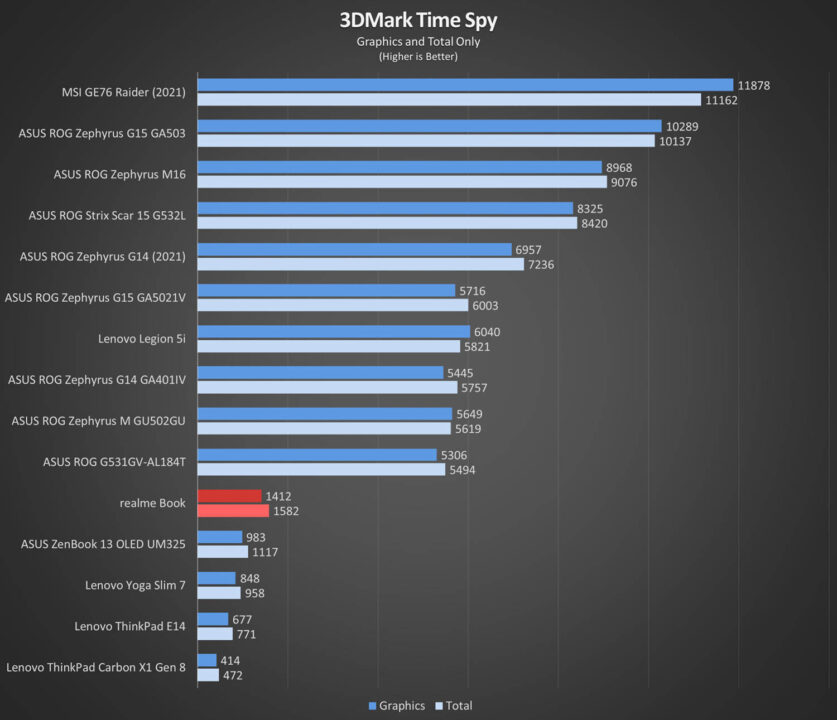
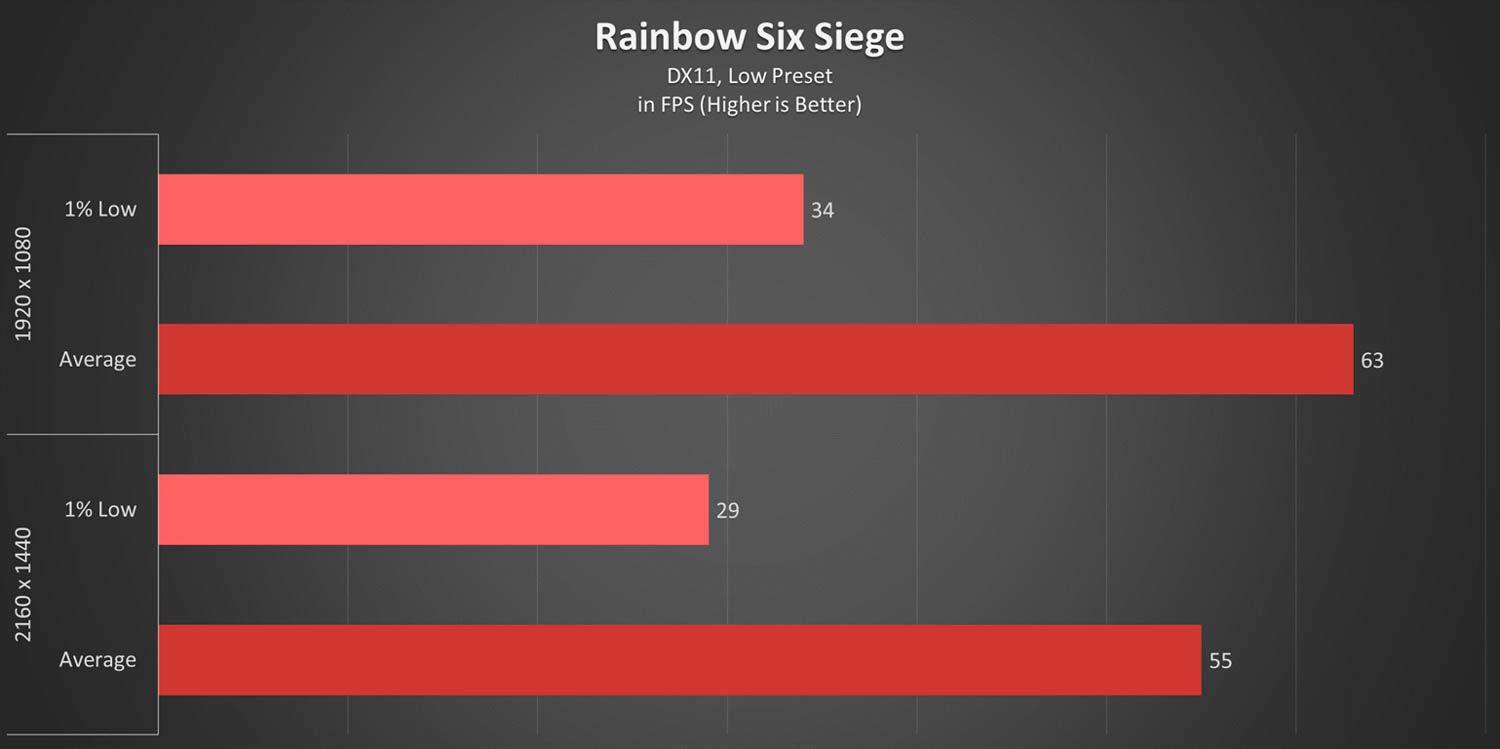
The notebook’s GPU power comes from the CPU’s integrated Intel Iris Xe. It’s not meant for high performance but Intel promises a significant increase in performance compared to their previous Intel HD integrated graphics.
The realme Book does place low in the charts on heavy synthetics like 3DMark Fire Strike and Time Spy since its GPU is not meant for high-end gaming but those who play graphically light games like competitive games such as Rainbow Six Siege can expect playable framerates at its native 2160 x 1440 resolution or at 1920 x 1080 with low settings.
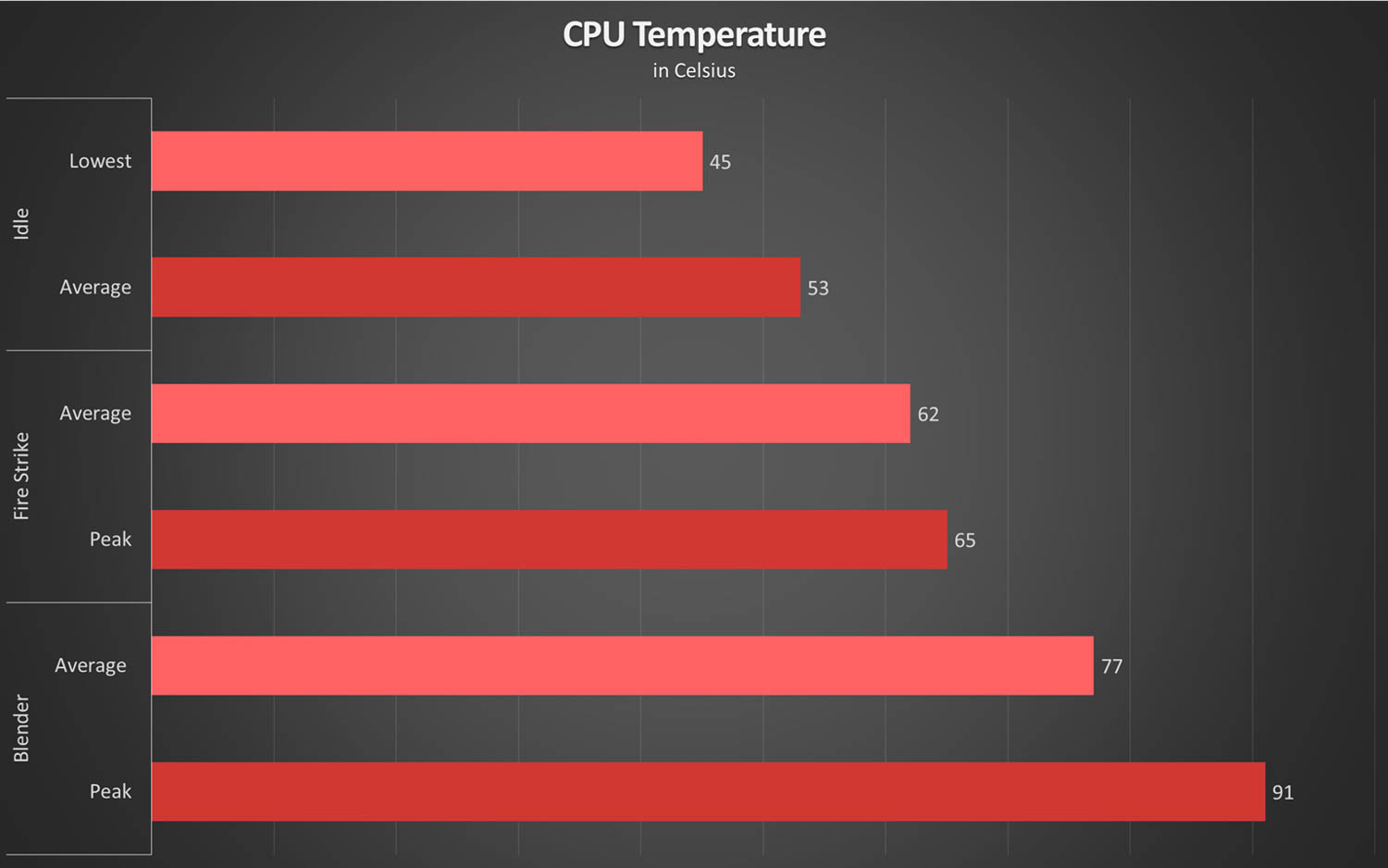
A dual-fan configuration cools the internals of the realme Book. The notebook sits at an average of 53°c in idle with minimal fan noise. Temperature does shoot up to 91°c at the maximum short boost that the system can do but ultimately pulls down clock speeds to lower down the temperature at around 77°c on average.
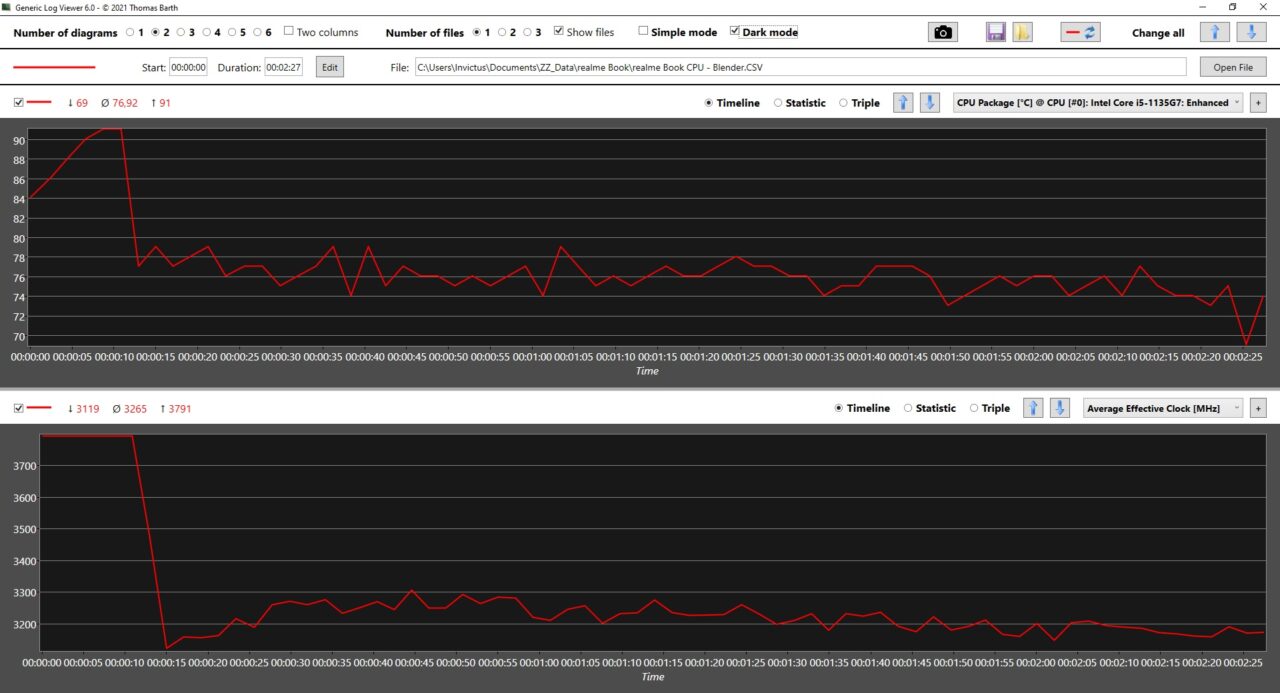
The Intel Core i5-1135G7 on our unit is able to boost to 3791MHz in short durations but it can’t scrub the heat fast enough due to the thin chassis. Ultimately, it seems that the realme Book can comfortably run heavy workloads at length between 3100 – 3200Mhz.

Its GPU fairs much better. Idle is only around 45°c on average. Meanwhile running a 3DMark Fire Strike loop will contently put the GPU at an average of 65°c on full load.
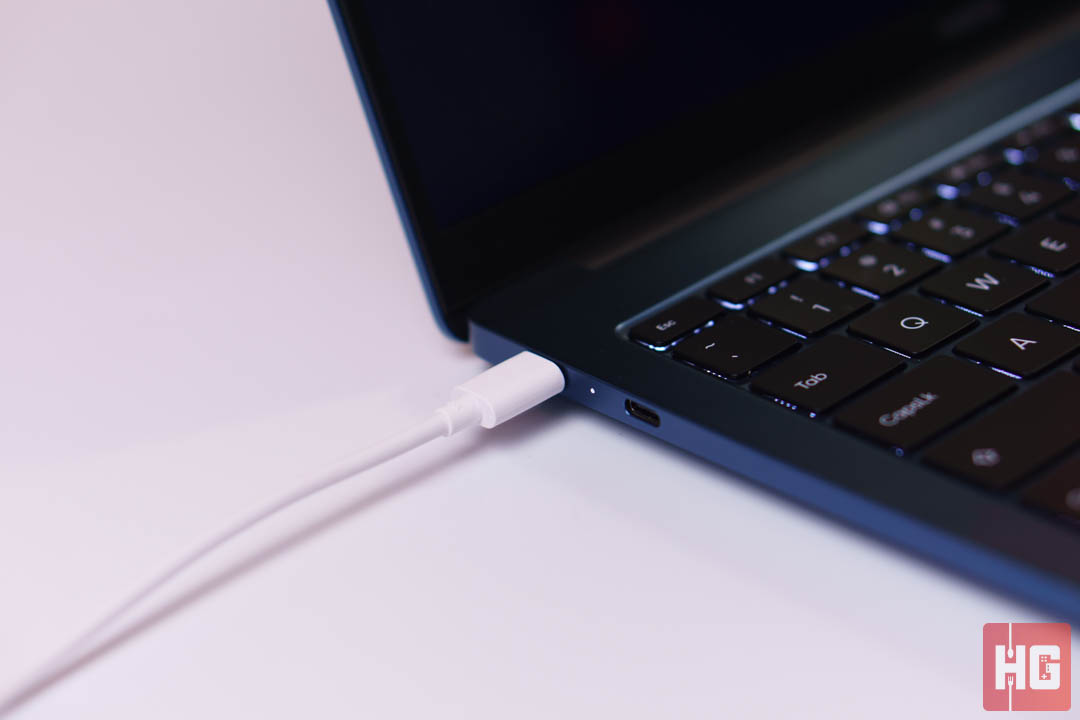
Power comes from a 54Whr battery pack that promises up to 11 hours of usage of local video playback. Based on our testing, it can last up to 7.5 hours of online video playback with brightness and volume set at 50 percent. It is feasible to last until 11 hours if you turn down both settings and play downloaded content on its drive.
It supports 65W USB PD charging through both its USB Type-C ports. Fill up its tank will usually take up around 1 hour and 40 minutes from 0% though a 30-minute charge will be enough to charge the notebook to around 40 – 50 percent.
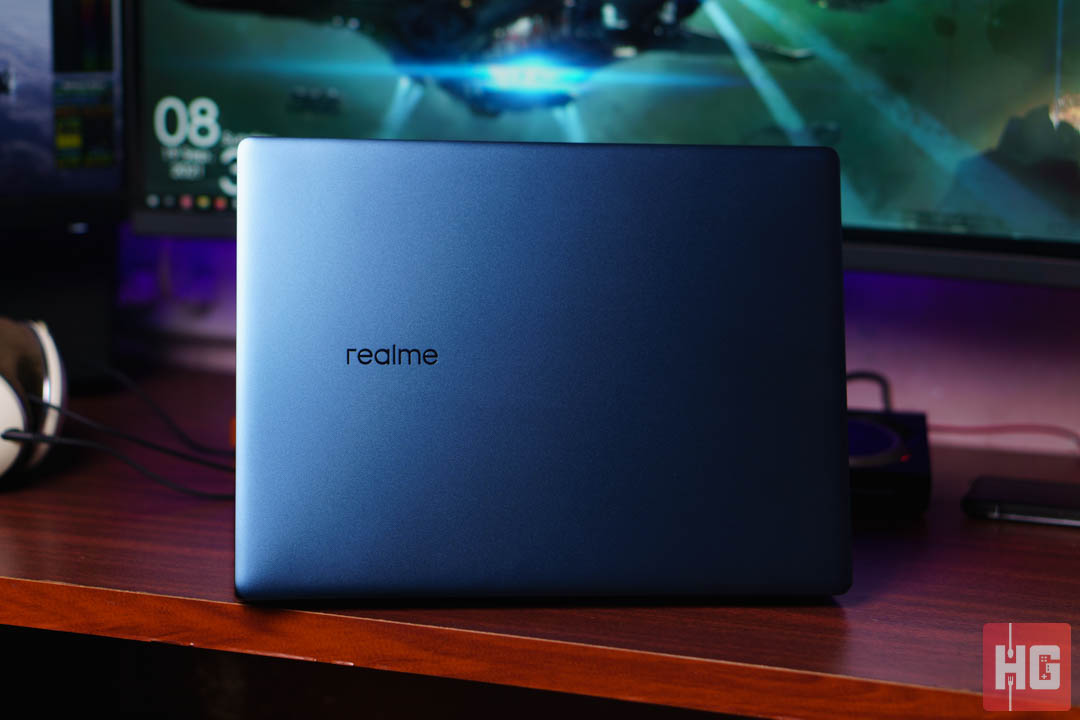
The realme Book has most of the attributes that most people look for in an ultrabook: slim design, a good selection of ports, a decent screen, and adequate performance. Some might also like the lack of bloatware that most Windows notebooks ship with.
One of the minor issues that we have with the notebook is its non-expandable RAM. 8GB is the bare minimum in 2021 and we were disappointed its memory capacity can’t be expanded.
The keyboard experience is pretty good but we were let down by the lack of an Fn-Lock key. The track pad is also less smooth when put against its competition. Meanwhile, the 14-inch 3:2 2160 x 1440 IPS screen will satisfy most users but will be lacking in color-sensitive work.
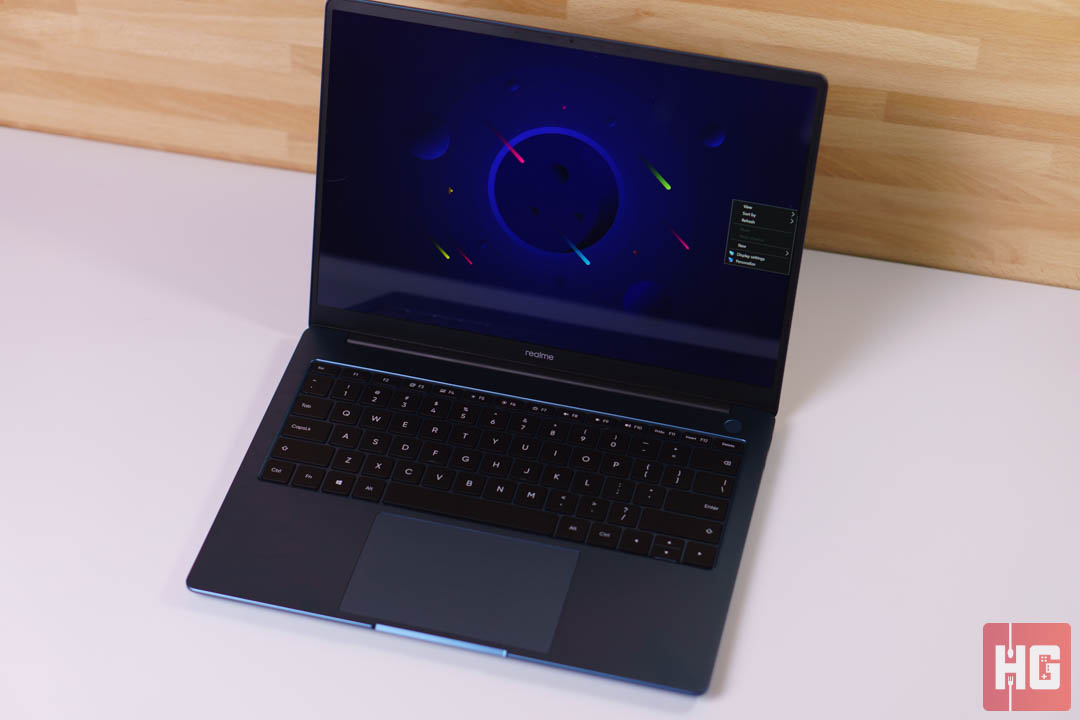
Battery life is good at around 7.5 hours of usage when watching online content at 50% brightness and volume. Charging is pretty fast and since it supports USB PD charging, you can fill up the notebook’s battery using a compatible power bank.
Overall, the realme Book is a decent first laptop from the brand. It checks all the boxes of a good ultrabook but has room for improvement. Priced at PhP 47,990 for the i5-1135G7 version, it does veer close to some of the offerings of established brands.

realme’s freshman effort in the notebook space is a solid enough offering that those who are willing to jump on the bandwagon can expect a great experience, which is why we are giving it our seal of approval.
The realme Book is available in i3-1115G4 and i5-1135G7 variants for PhP 37,990 and PhP 47,990, respectively. Both are available in two colorways: Real Silver and Real Blue. Pre-orders will start tomorrow and will be widely available in the Philippines starting October 1, 2021.
In addition, the realme Book will be running a couple of promos via Lazada and Silicon Valley:
realme Lazada Flagship Store
Silicon Valley
